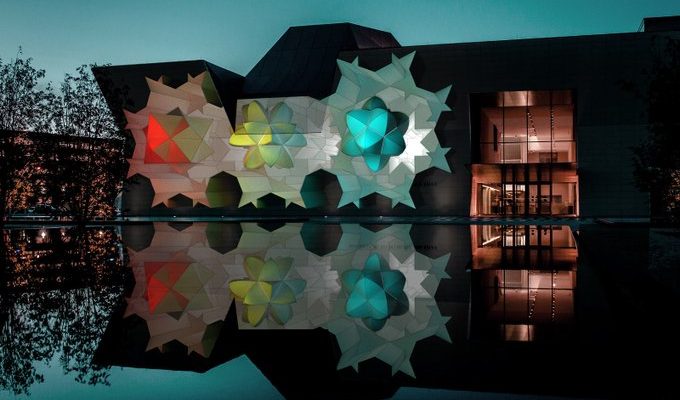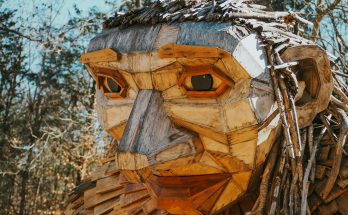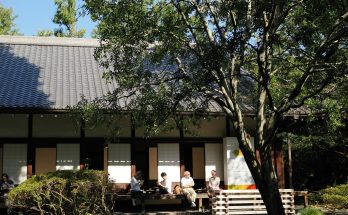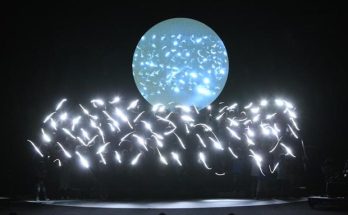A community celebration of pluralism, connection and cross-cultural understanding were held yesterday evening to signal that all are welcome on the recently renamed Aga Khan Boulevard. New community art features and their meanings by Toronto artist Javid Jah were also revealed.
Curated by Elder Whabagoon and Cat Curran, the celebration featured Indigenous, Ismaili and Japanese Artists. A mural that explains the vision behind Jah’s new local art installations along Aga Khan Boulevard, between Don Mills Road and the east side of the Don Valley Parkway overpass, was projected onto the outer wall of the Aga Khan Museum.
The temporary projected mural was visible on October 7 from 8 to 10:30 p.m. at Aga Khan Park, 77 Wynford Dr.
Managed by the City’s StreetARToronto initiative, the new local art installations were selected by a committee and the public following a competitive process. The banners, crosswalks, traffic signal boxes, and temporary mural projection displayed the final integrated design concept submitted by Jah transforming the roadway into a celebrated community feature.
The community celebration and art installations along Aga Khan Boulevard collaborate with the City of Toronto; Aga Khan Foundation; Ismaili Centre, Toronto; Aga Khan Park and the Aga Khan Museum.
More information about the community celebration event, curators, and artists are available on the Aga Khan Museum’s webpage.
About the Aga Khan Park
Designed by the Lebanon-based landscape architect Vladimir Djurovic, the Aga Khan Park covers 6.8-hectares of land and connects two majestic buildings through a pathway of green spaces, gardens and water features with Persian and Mughal-inspired garden, known as Chahar bagh (four-part garden) as its central feature. It creates a tranquil environment that is equally suited for reflection and dynamic programming. Together with the Aga Khan Museum and the Ismaili Centre, Toronto, the Park is where nature, art and spirit culminate as one.
About the Ismaili Centre, Toronto
Situated, together with the Aga Khan Museum, within the 6.8-hectare landscaped Aga Khan Park, the Ismaili Centre, Toronto is a space for the public that showcases the work of three renowned architects. Japanese architect Fumihiko Maki designed the Aga Khan Museum, while Indian architect Charles Correa designed the Ismaili Centre. Featuring a formal garden, the Park was designed by architect Vladimir Djurovic of Lebanon. Integrating all aspects of the project, the Canadian firm Moriyama & Teshima’s programs ranging from lectures, seminars and exhibitions, to cultural and social events creates an understanding of the values, ethics, culture and heritage of Ismaili Muslims, and of the work of the Aga Khan Development Network. The buildings and Park represent His Highness the Aga Khan’s longstanding relationship with Canada and his appreciation for the country’s commitment to pluralism and cultural diversity.
About the Aga Khan Museum
Established and developed by the Aga Khan Trust for Culture (AKTC), which is an agency of the Aga Khan Development Network (AKDN), the Aga Khan Museum in Toronto, Canada’s mission is to foster a greater understanding and appreciation of the contribution that Muslim civilizations have made to world heritage while often reflecting, through both its permanent and temporary exhibitions, how cultures connect with one another. Sharing a 6.8-hectare site with Toronto’s Ismaili Centre, which was designed by architect Charles Correa, the Museum was designed by architect Fumihiko Maki. The surrounding landscaped park was designed by landscape architect Vladimir Djurovic.
#AgaKhanMuseum; #Ismaili Centre, #Toronto





